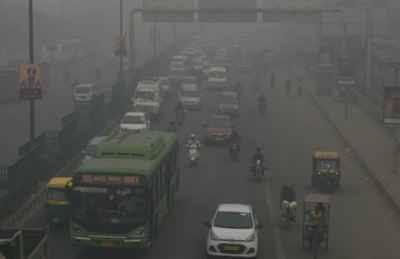Air pollution linked to a rise in emergency room visits by children, shows study

Spike in air pollution levels corresponded to an increase in visits by children to hospital emergency rooms (ER) for treatment of acute respiratory infections, finds a two-year-long study in Delhi.
However a rise in fine particulate matter — PM10 and PM2.5 — was least correlative with emergency room visits for treatment of respiratory-illnesses.
Delhi sees a significant rise in pollution in winter. Though the impact of pollution on health is known, there is a paucity of studies that link specific pollutants, for example, sulphur dioxide or nitrous oxide, with adverse health outcomes.
Previous studies have found that children are more susceptible to adverse health effects of air pollution than adults due to immature growth of lungs, making them vulnerable to inflammatory and oxidative damage. Further, due to higher respiration rates and outdoor physical activity, children retain more air pollutants per unit body weight than adults.
Read also: Recycling While Protecting Environment
Nitrous oxide and sulphur dioxide emissions are associated with vehicular and industrial pollution and previous studies have noted an increase in hospital visits when these levels spike, the authors note.
Though not peer-reviewed, the study appears in pre-print server ‘medRxiv’ and includes researchers from the All India Institute of Medical Sciences, CSIR-Institute of Genomics and Integrative Biology, Kalawati Saran Children’s Hospital and Vallabbhai Patel Chest Institute.
The study is significant because it analysed hospital visits of as many as 19,120 children over two years, from June 2017 to February 2019. The study states that there was a roughly 21%-28% increase in visits by children manifesting symptoms of acute respiratory disease during days of ‘high’ and ‘moderate’ level pollution, compared to days of ‘low pollution’.
For the study, the researchers compared levels of PM10 and PM 2.5, SO2 (sulphur dioxide), CO (carbon monoxide), NO2 (nitrous oxide) and O3 (ozone) with day-wise data on ER admissions of children. The age of the children studied ranged from 5 months to 3 years.
The pollutants most strongly linked with more ER respiratory visits were sulphur dioxide and carbon monoxide. Paradoxically, the pollutants most strongly associated with air pollution — PM 10 and PM 2.5 — showed weak links with an increase in the number of ER visits. In fact, days of elevated PM 2.5 levels, when taken on its own, corresponded to a dip in the number of ER visits. “For every 10 microgram/cubic metre increase association of the acute respiratory ER visits with every 10 unit change of PM10, NO2, O3, CO and SO2 remained significant after adjusting for multi-pollutant and confounding variables effects. In contrast, no effect was seen for PM2.5,” the authors note.
The relative increase in visits was also observed when days preceding pollution spikes were considered, further highlighting the role that pollution plays in exacerbating respiratory illnesses, according to the study.
Dr. Rohit Sarin, co-author of the study and director, National Institute of Tuberculosis and Respiratory Diseases, New Delhi said that the lower association of particulate matter was primarily because its effects on respiratory health are not always immediately visible and because the background levels of such matter is usually very high in Delhi. “Because of high background levels, its contribution is hard to discern, and moreover, particulate matter health effects take more time to manifest. So, this study does not imply that PM is of lesser concern,” he told The Hindu.
Particulate matter has been linked to a number of ailments, from cardiovascular diseases to chronic obstructive pulmonary disease, and, therefore, a significant portion of cities’ budget to tackle air pollution is spent on installing sensors that monitor particulate matter levels. A limitation of the study, Dr. Sarin pointed out, was that emergency visits to tertiary care hospitals, as relied upon in the study, account for only a limited number of people with respiratory ailments. “The general tendency is to visit a doctor closest to you and that need not be a tertiary care centre. So, having more primary centres to study pollution effects would be useful,” he added.
Credit: The Hindu
